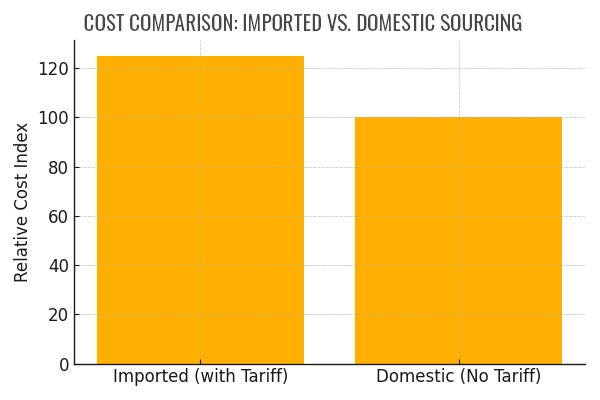Recent U.S. chemical tariffs are creating waves throughout the global industrial supply chain. For domestic manufacturers, the challenge is real—but so is the opportunity. In this post, we’ll explore the implications of these new trade restrictions, how they’re affecting chemical imports and exports, and why now is the time to double down on domestic manufacturing and beneficial reuse strategies.
What Are the New U.S. Chemical Tariffs?
In early 2025, the U.S. administration imposed sweeping tariffs on a range of imported goods, including many industrial chemicals from countries such as China, Mexico, and Canada. According to Chemistry World, the new tariffs place a 25% duty on thousands of product categories, many of which are essential raw materials for the chemical industry.
While these tariffs aim to protect U.S. jobs and revive domestic manufacturing, they also place immediate cost burdens on companies dependent on international supply chains.
Impact on the U.S. Chemical Supply Chain
Chemical manufacturers often rely on complex, multi-border supply chains. The American Chemistry Council warns that chemicals may cross national borders several times before reaching final formulation. Disruption in any part of that chain could lead to delays, rising costs, and ultimately a decline in global competitiveness.
According to a report by the Yale Budget Lab, these tariffs are expected to increase consumer prices and reduce total imports, thereby raising input costs for U.S. manufacturers across the board.
Turning Tariffs into Opportunity
Despite the immediate setbacks, these new U.S. chemical tariffs also open the door for innovation, particularly in domestic sourcing and beneficial reuse. With overseas options becoming more expensive, U.S. producers who invest in reshoring and reengineering their supply chains may gain long-term advantages.
Domestic Manufacturing Investments
Major companies like Johnson & Johnson and Eli Lilly are investing billions to build new facilities in the U.S., creating a ripple effect across the industry. This push for localization helps reduce risk exposure to global trade fluctuations.
Beneficial Reuse as a Strategic Advantage
Companies that adopt beneficial reuse practices—reclaiming, repurposing, and reselling off-spec or co-product chemicals—stand to gain a significant cost advantage in this new tariff environment. Altiras, for example, helps companies turn residual waste into valuable products by analyzing potential reuse strategies that meet regulatory standards.

Key Benefits of U.S. Chemical Tariffs (If You Adapt)
- Increased domestic demand for U.S.-produced chemicals
- Reduced dependency on vulnerable supply chains
- Incentivized innovation in reuse, recycling, and reformulation
- Boost in sustainable practices, like solvent recovery and co-product optimization
- Job growth in U.S.-based manufacturing and chemical handling
What U.S. Chemical Companies Should Do Now
- Evaluate Tariff Exposure: Identify which imported raw materials are now more expensive and determine their domestic or reused alternatives.
- Explore Beneficial Reuse Options: Reassess waste and off-spec products for resale or in-house reuse potential.
- Partner with Domestic Suppliers & Buyers: Build relationships with U.S.-based companies that offer recycled or alternative chemical streams.
- Invest in R&D and Reformulation: Develop formulations that rely on tariff-free or reused ingredients.
- Monitor Compliance: Ensure all reuse strategies follow EPA and state regulations. (See EPA Reuse Basics)
Internal Resources
At Altiras, we help companies navigate market disruptions through strategic chemical sourcing & purchasing, reuse planning, and lab research. Explore our beneficial reuse services and standardized testing capabilities for more on how to adapt to the latest U.S. chemical tariffs.
The implementation of new U.S. chemical tariffs is already altering the global supply chain landscape. But these changes don’t have to be threats—they can be catalysts for transformation. Companies that act now—by reshoring production, reusing waste, and partnering with sustainable buyers and suppliers—can not only survive this shift but emerge stronger and more competitive.
Stay tuned for next week’s article where we dive into how beneficial reuse chemicals are helping reshape cost structures and environmental impact across the industry.
